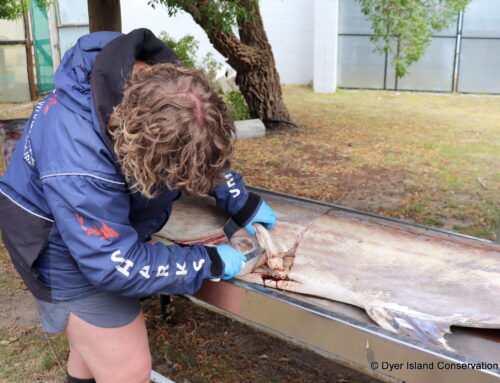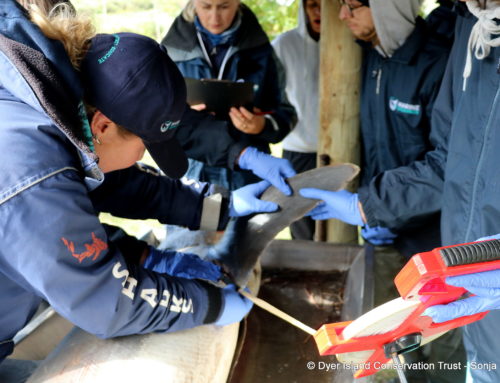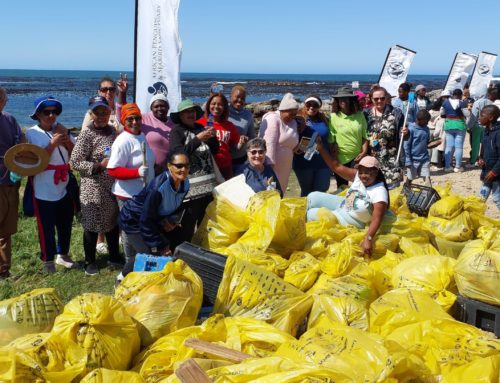Effects of Smart Position Only (SPOT) Tag Deployment on White Sharks
November 16, 2011 by dyertrust
The Trust is very excited about the latest scientific publication from our research team. Entitled Effects of Smart Position Only (SPOT) Tag Deployment on White Sharks Carcharodon carcharias in South Africa, the article on SPOT tags on white sharks has gone to press and can be downloaded here 

Weighing only a couple of grams and measuring less than 6 centimeters, it was dehydrated and weak when found in Kleinbaai, about 100 kilometers from Cape Town, after recent storms.
The turtle is now successfully recovering at the Two Oceans Aquarium in Cape Town prior to its release in the Indian Ocean. According toour marine biologist, Michelle Wcisel, less than 1 in 1000 hatchlings survive to adulthood. She said: If this lucky youngster reaches maturity it will reach anywhere between 70 – 150 kgs and measure more than a meter in length.
Loggerhead turtles (Caretta caretta), which are an endangered species, have a lifespan of about 50 years. They are rarely seen in the cold waters beyond Cape Aghulasthe most southerly point of Africa – and are particularly susceptible to being driven along by storms and strong sea currents.


After consulting with Mike Meyer of MCM and informing Deon Geldenhuys of Cape Nature, Wilfred Chivell Dyer Island Cruises (DIC) and founder of Dyer Island Conservation Trust (DICT), Michael Rutsen, White Shark Diving Unliited (WSDU), Kira and Kwezi of DIC set out to help the whale on Calypso. Stan had people on board to form a back up for holding and picking up boys.
At 14:20, a humpback whale was spotted with a 50 m yellow 20mm polyethylene rope trailing behind it and with a red and white and a yellow buoy attached a meter behind the fluke.
After assessing the situation, we attached the boat to the whale to tire the animal down. We added two big red floats to the whale and after an hour started to cut ropes loose. The tail was entangled around the base and around the flukes. It was difficult as the tail never emerged and in the process of removing the buoys, a cutting device and two extension poles were lost in the process. The two big and one small buoys, a piece of metal anchor and 50 meters of rope were removed, but a piece of rope still remained around the tail base and fluke.
We attached ourselves to the whale twice after that as the remainder of rope was very short. We tried to unravel the rope, did another cut and attached a float to the whale once more. As the whale moved into the breaker zone, we had to fall back to wait for her to go deeper again. The motion of the breaking surf freed her from the remaining rope and float and she swam free. We got close to her once more and could see the white marks around the tail, but no ropes were attached any more.
The whale was remarkably calm from the start and allowed us to come very close without showing any evasive behavior. Although we lost a cutting device, two poles and a buoy, we were fortunate to free the heavily entangled whale within two hours. We will try to recover the buoy on the beach tomorrow.






